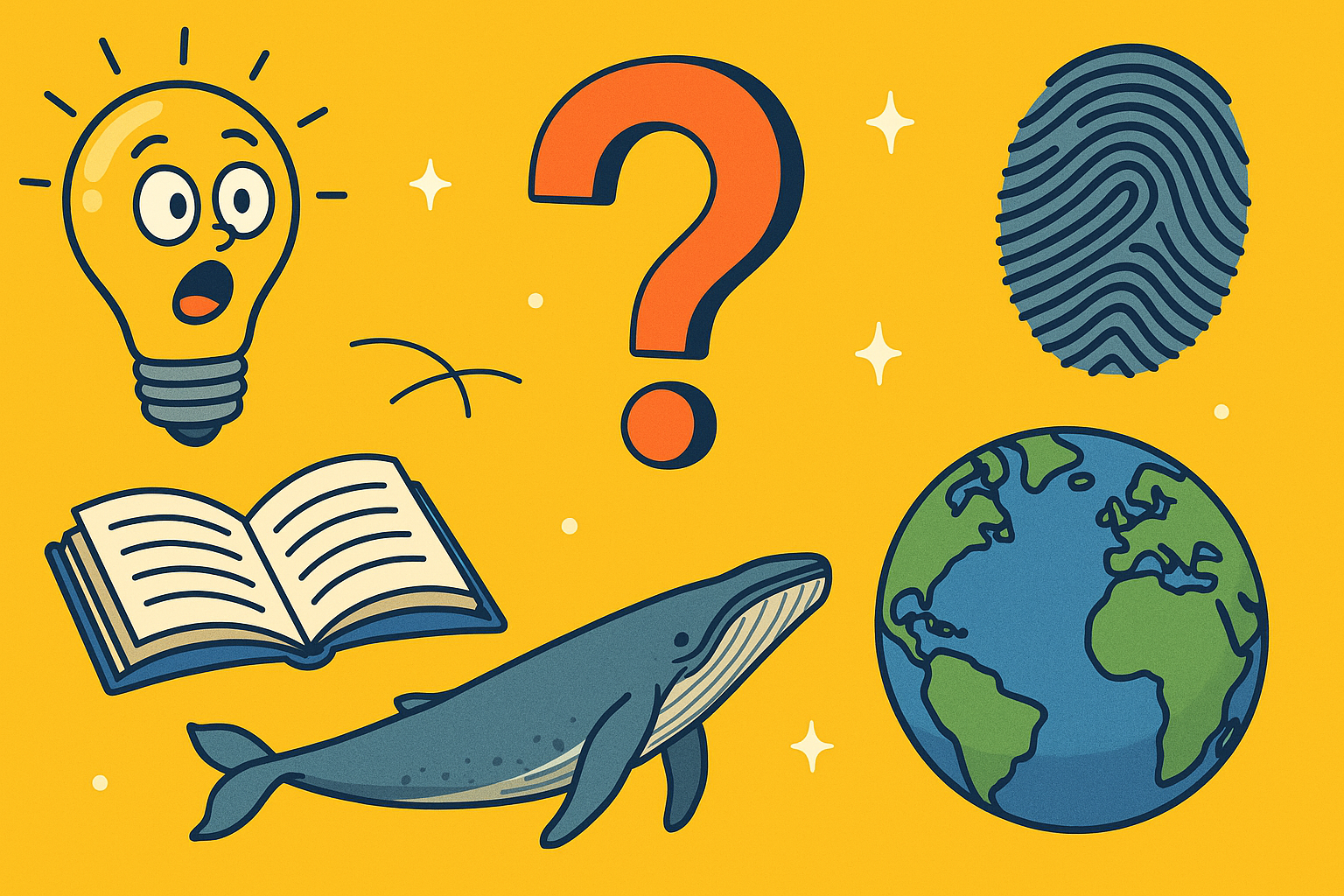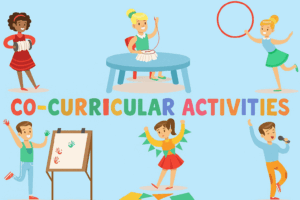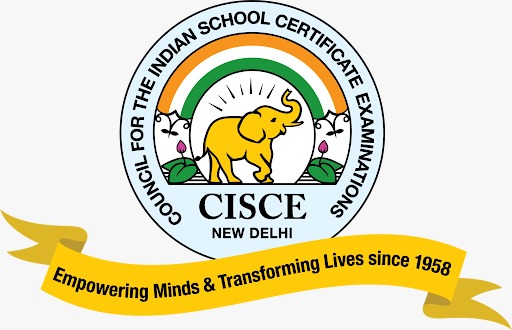ave you ever learned something so unexpected it changed the way you saw the world? For example—jellyfish have been around for over 500 million years, outliving even dinosaurs. Surprising, right? Well, we’ve gathered more amazing facts just like that. This blog covers everything from science and space to inventions, geography, and cultures—while integrating key topics that often spark curiosity among students in dynamic learning environments like Cambridge schools in South Bangalore.
Science & Nature (1–10)
- Octopuses have three hearts. Two pump blood to the gills, while the third pumps it to the rest of the body.
- Sloths can hold their breath longer than dolphins. They slow their heart rate to survive underwater for up to 40 minutes.
- Bananas are technically berries, but strawberries aren’t. It all comes down to botanical classifications!
- Honey never spoils. It’s naturally antimicrobial and can last for thousands of years.
- Trees can communicate through fungal networks. They share nutrients and send alerts underground.
- Some turtles can breathe through their butts. This helps them survive during long underwater hibernations.
- Cows have best friends. They get stressed when separated.
- Your stomach lining renews every 3–4 days. Otherwise, it would digest itself.
- A teaspoon of neutron star material would weigh over 6 billion tons. That’s incredibly dense!
- Sharks existed before trees. Sharks have been around for over 400 million years, while trees appeared around 350 million years ago—making sharks one of the oldest living species on Earth.
Space Facts (11–20)
- A day on Venus is longer than its year.
- The moon moves away from Earth by 3.8 cm per year.
- Neutron stars spin up to 600 times per second.
- You would weigh less on Mars. It has just 38% of Earth’s gravity.
- The ISS orbits Earth every 90 minutes. Astronauts see 16 sunrises a day.
- Astronauts grow taller in space. Their spines decompress.
- Space smells like burnt steak. That’s what astronauts report.
- Stars don’t twinkle in space. The twinkling is caused by Earth’s atmosphere.
- 95% of the universe is invisible. It’s dark matter and dark energy.
- The earliest known mirrors were made from polished obsidian, but today, we use both concave and convex mirrors in everything from telescopes to vehicles.
Scientists and Inventions (21–30)
- The microwave was invented by accident. Radar melted a chocolate bar.
- Bluetooth is named after a Viking king. Harald Bluetooth united tribes.
- Velcro was inspired by burrs. They stuck to a dog’s fur.
- The stethoscope began as a paper tube.
- The first email was sent in 1971.
- Paper was invented in China around 100 BCE.
- Airbags deploy in 0.04 seconds. That’s faster than a blink!
- GPS was originally for the military. Now it’s used in daily life.
- The telescope transformed astronomy. It opened our eyes to the universe.
- The stethoscope, invented by René Laennec in 1816, but today, we use both concave and convex mirrors in everything from telescopes to vehicles.
History Facts (31–40)
- The Great Wall isn’t visible from space. That’s just a myth.
- Cleopatra lived closer to the moon landing than to the pyramid construction.
- The first Olympics were in 776 BCE. Held in Greece.
- The Titanic sank in 1912. Discovered in 1985.
- Ancient Indian surgeons performed advanced operations.
- The Berlin Wall fell in 1989. It reunited East and West Germany.
- The printing press was invented in 1440. It sparked the literacy revolution.
- Zero was invented in India. A huge leap in math.
- Jericho is one of the oldest cities in the world.
- The Kumbh mela a massive religious gathering, deeply rooted in Indian culture, attracts millions of pilgrims and was once photographed by a NASA satellite due to its sheer scale.
General Curiosities (41–50)
- Your body has enough iron to make a small nail.
- Lightning is five times hotter than the sun’s surface.
- The smell of cut grass is a distress call.
- Raindrops are shaped like buns, not teardrops.
- Jellyfish survived all mass extinctions.
- Koalas have fingerprints like humans.
- Crocodiles can go months without eating.
- Caterpillars liquefy before becoming butterflies.
- The Eiffel Tower expands in summer. Heat stretches the metal.
- The most misspelled word in English is “accommodate.” its double C and double M, which is why using effective spelling strategies is essential for mastering such tricky words.
Geography Fun Facts (51–60)
- Mawsynram, India, is the wettest place on Earth.
- Africa spans all four hemispheres.
- Russia covers 11 time zones.
- Mount Everest grows each year.
- Antarctica is the driest, coldest continent.
- Pink dolphins live in the Amazon River.
- Iceland has no mosquitoes.
- Canada has the longest coastline.
- Earth’s magnetic pole constantly shifts.
- There’s a place in the Pacific Ocean called Point Nemo that’s farther from land than any other location on Earth.
Cultures Around the World (61–70)
- Japan celebrates Osoji, a year-end cleaning ritual.
- Bhutan uses Gross National Happiness to measure success.
- In Korea, babies are considered one year old at birth.
- Scotland’s national animal is the unicorn.
- Mexico’s Day of the Dead celebrates life.
- Touching someone’s head is rude in Thailand.
- Ethiopia’s calendar is 7 years behind the Gregorian.
- Maori people greet with a hongi—nose touch.
- Italians consider 17 an unlucky number.
- In Finland, there’s a national day for failure. Celebrated on October 13, it encourages people to embrace mistakes and learn from them—turning failure into a positive force for growth.
Conclusion
These amazing facts show how incredible the world truly is—whether you’re looking at stars, building telescopes, or exploring traditions. Learning is a lifelong adventure, and with every fact you learn, the universe becomes just a little more fascinating. In inspiring academic environments like IGCSE schools in Whitefield Bangalore, students are encouraged to explore such wonders and think beyond textbooks.
FAQs
Learning amazing facts stimulates curiosity, enhances general knowledge, and encourages critical thinking. These facts often spark deeper interest in subjects like science, history, and culture—making learning fun and memorable.
Use visualization, associate facts with stories, or discuss them with friends. Creating flashcards, playing quiz games, or even linking facts to movies or books can make them easier to recall.
Absolutely! These facts can enrich school projects, be used for trivia games, presentations, or even spark class discussions—especially in inquiry-based or international curricula like IGCSE or Cambridge.
The facts included in this blog are drawn from reliable scientific, historical, and cultural sources. However, readers are encouraged to explore further and verify using trusted encyclopedias, educational websites, or journals.
It helps build a well-rounded worldview, promotes cross-disciplinary thinking, and fosters empathy by appreciating diverse cultures. In progressive schools, such exposure prepares students to become global citizens and lifelong learners.







